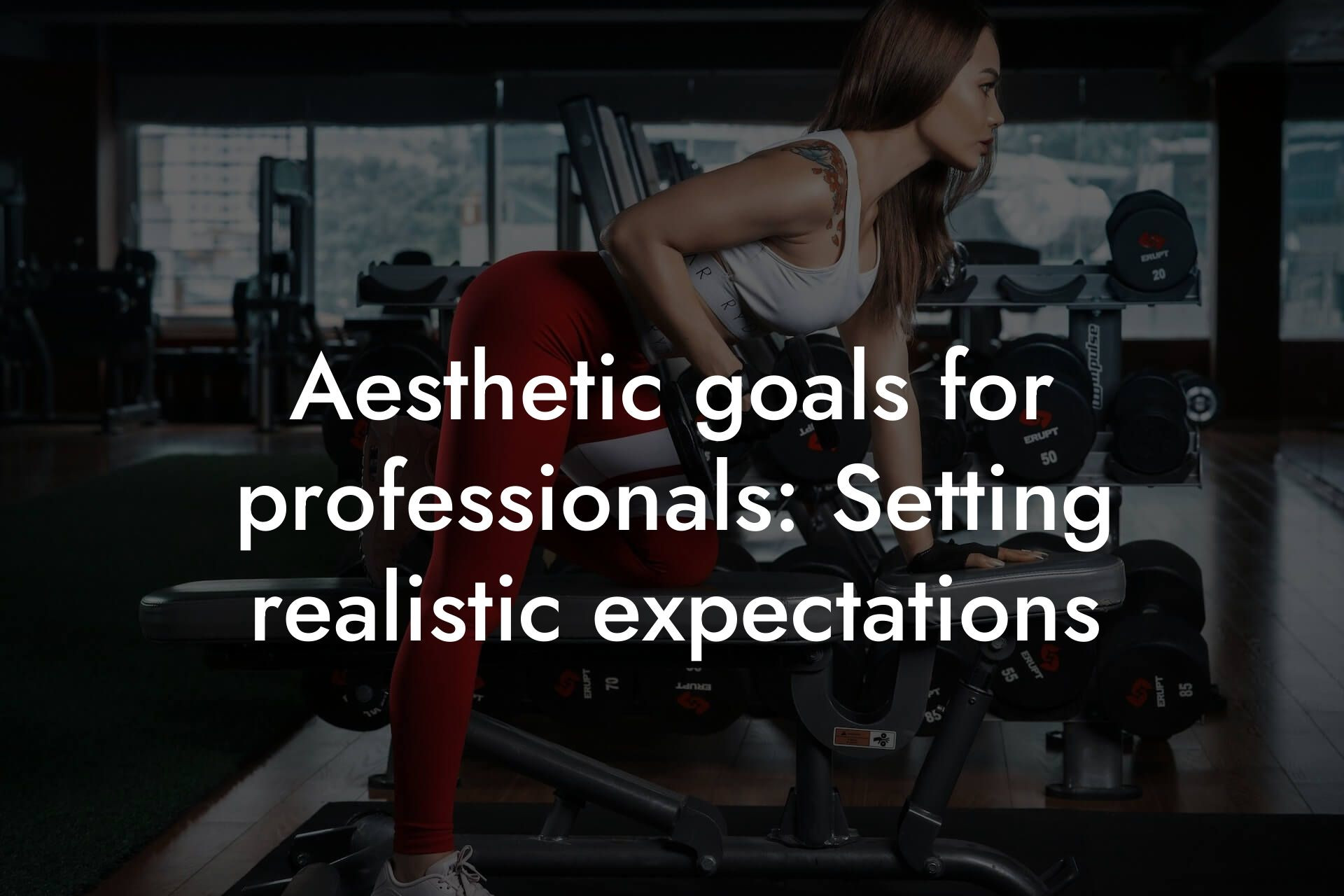As a high-earning professional, you understand the importance of maintaining a lean physique not only for aesthetic reasons but also for overall health and well-being. At Tano Performance Group, we believe that having a complete understanding of your body composition is crucial in achieving your fitness goals. In this article, we will provide you with a comprehensive guide on how to maintain a lean physique year-round, including the role of DEXA scanning in tracking your progress.
Table of Contents
- Understanding Your Body Composition
- Set Realistic Goals and Track Progress
- Macronutrient Balance and Meal Frequency
- Hydration and Electrolyte Balance
- Resistance Training and High-Intensity Interval Training
- Cardiovascular Exercise and Active Recovery
- Stress Management and Sleep
- Consistency and Patience
- Frequently Asked Questions
Understanding Your Body Composition
Before we dive into the tips and strategies for maintaining a lean physique, it's essential to understand your body composition. Body composition refers to the percentage of fat mass and lean mass in your body. Lean mass includes muscle, bone, and water, while fat mass includes both essential and storage fat. Having a high percentage of lean mass and a low percentage of body fat is ideal for overall health and athletic performance.
A DEXA scan is a non-invasive and highly accurate method of measuring body composition. At Tano Performance Group, we use DEXA scanning to provide our clients with a comprehensive body assessment, including body fat percentage, lean mass, bone density, and more. This information is essential in creating a personalized fitness and nutrition plan tailored to your specific needs and goals.
Set Realistic Goals and Track Progress
Setting realistic goals and tracking progress is crucial in maintaining a lean physique. Aim to lose 0.5-1% of body fat per week for a sustainable weight loss. This may seem slow, but it's a more maintainable pace that reduces the risk of muscle loss and increases the likelihood of long-term success.
Track your progress by taking regular body fat measurements, weight, and circumference measurements. Use a food diary or mobile app to track your nutrition and macronutrient intake. Regular progress photos can also help you visualize your progress and stay motivated.
Macronutrient Balance and Meal Frequency
A balanced diet with the right macronutrient ratio is essential for maintaining a lean physique. Aim for a daily intake of 1.6-2.2 grams of protein per kilogram of body weight, 2-3 grams of carbohydrates per kilogram of body weight, and 0.5-1 gram of healthy fats per kilogram of body weight.
Increase your meal frequency to 5-6 meals per day, including 2-3 main meals and 2-3 snacks in between. This will help keep your metabolism high and prevent excessive hunger that may lead to overeating. Focus on whole, unprocessed foods such as lean proteins, vegetables, fruits, whole grains, and healthy fats.
Hydration and Electrolyte Balance
Adequate hydration is crucial for overall health and athletic performance. Aim to drink at least 3-4 liters of water per day, and make sure to drink water during and after exercise to replenish lost electrolytes. Electrolytes such as sodium, potassium, and magnesium play a vital role in muscle function and hydration.
Monitor your urine output and color to ensure you're adequately hydrated. If your urine is dark yellow or you're not urinating frequently enough, it may be a sign of dehydration.
Resistance Training and High-Intensity Interval Training
Resistance training is essential for building and maintaining lean muscle mass. Aim to perform resistance exercises at least 3-4 times per week, targeting all major muscle groups such as chest, back, shoulders, legs, and core. Focus on compound exercises such as squats, deadlifts, and bench press that work multiple muscle groups at once.
High-intensity interval training (HIIT) is a highly effective way to burn fat and improve cardiovascular fitness. Incorporate HIIT workouts 2-3 times per week, using exercises such as sprints, burpees, jump squats, and mountain climbers. Aim for 20-30 minutes per session, with 30-60 seconds of high-intensity exercise followed by 30-60 seconds of rest.
Cardiovascular Exercise and Active Recovery
Cardiovascular exercise such as jogging, cycling, or swimming is essential for burning fat and improving cardiovascular fitness. Aim to perform at least 150 minutes of moderate-intensity cardiovascular exercise per week, or 75 minutes of vigorous-intensity exercise per week.
Active recovery is also crucial for maintaining a lean physique. Incorporate low-intensity activities such as yoga, stretching, or light walking into your routine 1-2 times per week. This will help reduce muscle soreness and improve overall recovery.
Stress Management and Sleep
Chronic stress can lead to increased cortisol levels, which can contribute to fat storage and muscle loss. Engage in stress-reducing activities such as meditation, deep breathing, or yoga to help manage stress. Aim for 7-9 hours of sleep per night to help with recovery and muscle growth.
Prioritize sleep by establishing a consistent sleep schedule, creating a relaxing bedtime routine, and avoiding screens and stimulating activities before bedtime.
Consistency and Patience
Maintaining a lean physique requires consistency and patience. Aim to make sustainable lifestyle changes that you can maintain in the long term, rather than trying fad diets or quick fixes. Focus on progress, not perfection, and celebrate small victories along the way.
Remember, it takes time and effort to achieve your fitness goals. Stay committed to your training and nutrition plan, and trust the process. With consistency and patience, you can maintain a lean physique year-round and achieve your fitness goals.
At Tano Performance Group, we are committed to helping you achieve your fitness goals through our comprehensive body assessment and personalized coaching services. Contact us today to learn more about how we can help you maintain a lean physique year-round.
Frequently Asked Questions
What is a lean physique, and why is it important?
A lean physique refers to a body composition with a low percentage of body fat, typically below 15% for men and 25% for women. Maintaining a lean physique is important for overall health, as it reduces the risk of chronic diseases like diabetes, heart disease, and certain types of cancer. Additionally, a lean physique can boost confidence, energy levels, and mental well-being.
How do I determine my body fat percentage?
There are several ways to measure body fat percentage, including skinfold measurements, bioelectrical impedance analysis (BIA), dual-energy X-ray absorptiometry (DXA), and hydrostatic weighing. You can consult with a healthcare professional or a certified fitness expert to determine the best method for you.
What is the ideal body fat percentage for men and women?
The ideal body fat percentage varies depending on age, gender, and fitness goals. For men, a body fat percentage of 8-14% is considered athletic, 15-19% is considered lean, and 20-24% is considered average. For women, a body fat percentage of 16-23% is considered athletic, 24-29% is considered lean, and 30-34% is considered average.
How often should I weigh myself to track progress?
It's recommended to weigh yourself once a week, at the same time of day, to track progress. This allows you to monitor changes in body weight and adjust your diet and exercise routine accordingly. Avoid weighing yourself daily, as this can lead to frustration and inconsistent results.
What is the role of nutrition in maintaining a lean physique?
Nutrition plays a critical role in maintaining a lean physique. Focus on consuming a balanced diet with plenty of protein, healthy fats, and complex carbohydrates. Aim to eat whole, unprocessed foods, and avoid sugary drinks and processed snacks.
How much protein do I need to consume daily?
The recommended daily protein intake varies depending on age, gender, and fitness goals. Aim to consume 1.6-2.2 grams of protein per kilogram of body weight from sources like lean meats, fish, eggs, dairy, and plant-based options.
What are the best exercises for building lean muscle?
The best exercises for building lean muscle include compound exercises like squats, deadlifts, bench press, rows, and lunges. These exercises work multiple muscle groups at once, promoting muscle growth and strength gains.
How often should I exercise to maintain a lean physique?
Aim to exercise at least 3-4 times per week, with at least one day of rest in between. This allows your muscles to recover and rebuild, promoting muscle growth and strength gains.
What is the importance of rest and recovery in maintaining a lean physique?
Rest and recovery are crucial for muscle growth and repair. Adequate rest allows your muscles to recover from intense exercise, promoting muscle growth and strength gains. Aim for 7-9 hours of sleep per night and take rest days as needed.
How can I maintain a lean physique during the holiday season?
Maintaining a lean physique during the holiday season requires discipline and planning. Focus on portion control, choose healthier options, and prioritize exercise. Stay hydrated, get enough sleep, and avoid overindulging in sugary treats and drinks.
What are the benefits of incorporating high-intensity interval training (HIIT) into my workout routine?
HIIT offers several benefits, including improved cardiovascular health, increased caloric burn, and enhanced insulin sensitivity. It also promotes muscle growth and strength gains, and can be adapted to suit various fitness levels.
How can I stay motivated to maintain a lean physique?
Staying motivated requires setting realistic goals, tracking progress, and celebrating small victories. Find a workout buddy or accountability partner, and reward yourself for reaching milestones. Stay positive, focus on the journey, and remind yourself of the benefits of maintaining a lean physique.
What are the common mistakes people make when trying to maintain a lean physique?
Common mistakes include crash dieting, overexercising, and neglecting rest and recovery. Avoid fad diets, focus on sustainable lifestyle changes, and prioritize overall health and well-being.
How can I maintain a lean physique while traveling?
Maintaining a lean physique while traveling requires planning and preparation. Pack healthy snacks, choose hotels with fitness facilities, and prioritize exercise. Stay hydrated, get enough sleep, and avoid overindulging in local cuisine.
What is the role of stress management in maintaining a lean physique?
Chronic stress can lead to increased cortisol levels, promoting fat storage and muscle loss. Practice stress-reducing techniques like meditation, yoga, or deep breathing exercises to manage stress and promote overall well-being.
How can I maintain a lean physique as I age?
Maintaining a lean physique as you age requires adapting your diet and exercise routine to suit your changing body. Focus on resistance training, incorporate high-intensity exercise, and prioritize nutrition and recovery.
What are the benefits of incorporating strength training into my workout routine?
Strength training offers several benefits, including increased muscle mass, bone density, and metabolism. It also improves overall health, reduces the risk of chronic diseases, and enhances athletic performance.
How can I maintain a lean physique during periods of high stress or anxiety?
Maintaining a lean physique during periods of high stress or anxiety requires prioritizing self-care, nutrition, and exercise. Focus on stress-reducing techniques, get enough sleep, and stay hydrated to manage stress and promote overall well-being.
What are the benefits of incorporating cardio exercises into my workout routine?
Cardio exercises offer several benefits, including improved cardiovascular health, increased caloric burn, and enhanced endurance. They also promote weight loss, improve mental health, and reduce the risk of chronic diseases.
How can I maintain a lean physique while working a desk job?
Maintaining a lean physique while working a desk job requires prioritizing exercise, nutrition, and movement. Take regular breaks to move, incorporate desk exercises, and focus on healthy snacking and meal prep.
What are the benefits of working with a personal trainer or fitness coach?
Working with a personal trainer or fitness coach offers several benefits, including customized workout plans, accountability, and motivation. They can help you set realistic goals, track progress, and provide guidance on nutrition and recovery.
How can I maintain a lean physique during menopause or andropause?
Maintaining a lean physique during menopause or andropause requires adapting your diet and exercise routine to suit your changing body. Focus on resistance training, incorporate high-intensity exercise, and prioritize nutrition and recovery.
What are the benefits of incorporating flexibility and stretching exercises into my workout routine?
Incorporating flexibility and stretching exercises into your workout routine offers several benefits, including improved range of motion, reduced injury risk, and enhanced athletic performance. It also promotes relaxation, reduces muscle tension, and improves overall well-being.
Here are some related articles you might love...
- Aesthetic goals for professionals: Setting realistic expectations
- The impact of sleep on physique and muscle recovery
- Common mistakes in physique development
- Top workouts to enhance your physique
- Building a professional physique: A guide for busy professionals
- The role of genetics in physique development
- Muscle toning vs building: What’s the difference?
- How your physique impacts your confidence and career
- Best supplements for improving physique
Zak Faulkner
Zak Faulkner is a leading authority in the realm of physical health and body composition analysis, with over 15 years of experience helping professionals optimise their fitness and well-being. As one the experts behind Tano Performance Group, Zak has dedicated his career to providing in-depth, science-backed insights that empower clients to elevate their physical performance and overall health.
With extensive knowledge of DEXA technology, Zak specializes in delivering comprehensive body assessments that offer precise data on body fat, muscle mass, bone density, and overall physique. His expertise enables individuals to make informed decisions and achieve their fitness goals with accuracy and confidence. Zak’s approach is rooted in a deep understanding of human physiology, combined with a passion for helping clients unlock their full potential through personalised strategies.
Over the years, Zak has earned a reputation for his commitment to excellence, precision, and client-focused service. His guidance is trusted by top professionals who demand the best when it comes to their health. Whether advising on fitness programs, nutritional strategies, or long-term wellness plans, Zak Faulkner’s insights are a valuable resource for anyone serious about taking their health and fitness to the next level.
At Tano Performance Group, Zak continues to lead our Content Team revolutionising how professionals approach their physical health, offering unparalleled expertise that drives real results.




